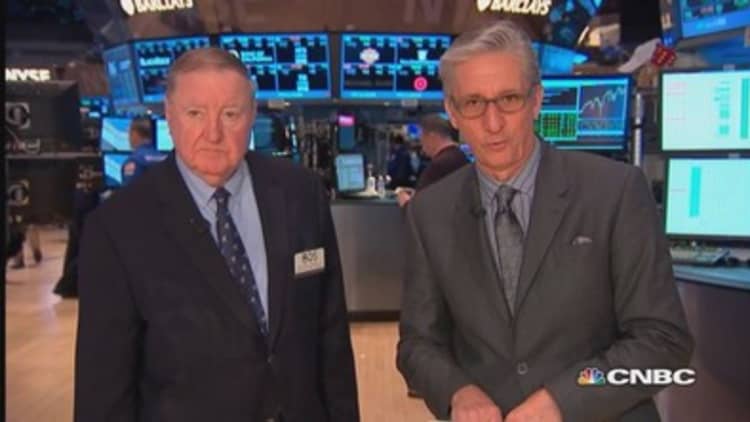
The U.S. stock market may be having a roller-coaster year, but you won't find many screaming investors riding the tracks.
A basic look at the 2015 chart shows a market that has seen a plethora of tops, bottoms and in-betweens in just 3 ½ months of trading, with a 6.3 percent difference between the index's intraday highs and lows. Point swings in the hundreds on the Dow industrials have been commonplace.
Yet investors aren't looking for protection—to the contrary, in fact.
The most commonly cited gauge of investor fear, the , has plunged a stunning 31 percent year to date. The index is used by options traders essentially as an insurance policy during troubled times.
Under normal conditions, a rising market would be met with a falling VIX and vice versa. This time around, an overall steady market has met with a VIX plunge.
"Something is wrong here," Nick Colas, chief market strategist at Convergex, wrote in a note to clients.
Colas spends a lot of time watching the implied volatility of various products, and is finding lately that the traditionally inverse relationship between price and "vol" instruments is breaking down.
"Now, apparently, we have a 'volatility trap': a situation where options players are deeply reluctant to pay too much for volatility protection, despite historically cheap pricing for downside hedging in listed options," he said. (Tweet This)
While the Nasdaq tech index is up 5.9 percent year to date, the S&P 500 has risen a shade less than 2 percent and the Dow industrials collectively have gained just 0.8 percent. After successive years of above-trend gains, a market where the best opportunities are not in U.S. large caps, as represented by the major indexes, but rather mid and small caps as well as nondomestic equities in Europe, Asia and elsewhere, is something new.
VIX-related products in the exchange-traded fund space have suffered well out of proportion with the broader market's moves.
Taking the 'vol' out of volatility
| Symbol | Name | Year-to-date % |
|---|---|---|
| VXX | S&P 500 VIX Short-Term Futures ETN | -31.6 |
| VIXY | VIX Short-Term Futures ETF | -31.8 |
| VXZ | S&P 500 VIX Mid-Term Futures ETN | -8.9 |
| VIXM | VIX Mid-Term Futures ETF | -9.1 |
| VIIX | VIX Short-Term ETN | -31.9 |
| VIIZ | VIX Medium-Term ETN | -7.8 |
Source: Source: ETFdb.com
While not completely explaining the trend, the overall nearly unchanged state of market indexes, despite the many peaks and valleys along the way, probably helps explain the VIX's stunning drop.
"You put on less protection when you're flat or down a little, and you put on more protection if we're up 4 or 5 percent on the S&P," said Art Hogan, chief market strategist at Wunderlich Securities. "We just seem to have a market that has spent a lot of time sideways, though in a very volatile fashion. We've taken the elevator down and the stairs up."
Sentiment surveys are reflecting investor ambivalence.
The most recent American Association of Individual Investors gauges have "neutral" sentiment—essentially expressing no strong opinion about where the S&P 500 will be six months from now—hitting near-historical highs.
AAII respondents in that camp have been above 45 percent for the past two weeks, with 47.1 percent feeling that way two weeks ago and 45.1 percent in that camp last week. That's the first time in more than 26 years that over 45 percent have been neutral. Bullish sentiment most recently was at 32.1 percent, well below the historical norm of 39 percent, but bears were at 22.8 percent, which was a seven-week low and below the normal 30.5 percent.
"The real fear trade happens and that protection comes on as you start to inch higher as opposed to grinding sideways," Hogan said. "






